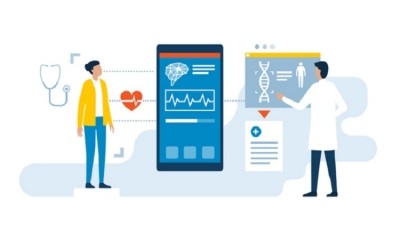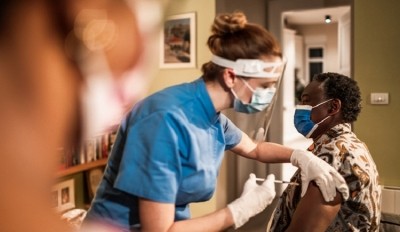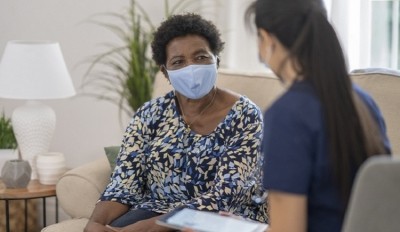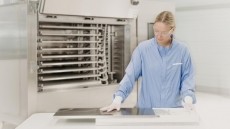Finding the right partners key to decentralized trials: Illingworth
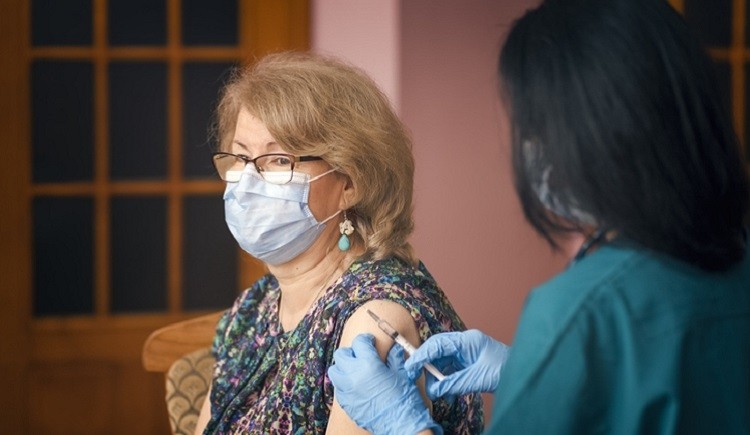
With COVID-19 causing a surge in decentralized trials, pharmaceutical firms and their research teams increasingly are looking to qualified technology and service providers to help bring the studies to the patients, in their homes. Gerard Barron, vice president of operations for Illingworth Research Group, a Syneos Health Company, spoke with Outsourcing-Pharma about how to choose qualified providers, and why joining forces with the right company can make a significant difference.
OSP: Could you please share your perspective on how decentralized trial (DCT) technology has evolved in recent years?
GB: There is no doubt that clinical trials have been transformed by COVID-19—in my view, it has been an unprecedented acceleration of change in attitudes and approaches. At the start of the pandemic, we saw demand for decentralized clinical trials soar; we thought perhaps it would return to previous levels after a few months, once everything settled down. How wrong was that?
Instead, the idea of decentralized clinical trials has developed from a “nice to have” to a necessity over the last year. Wearables, mHealth apps, and off-site research options are fast becoming the norm. That is because sponsors, patients, and sites have all started to see the true real-world benefits of decentralized clinical trials; they are not just an interesting concept or a passing phase, they make a big difference in the quality of the trial.
OSP: What are some of the tools trial teams are turning to in order to help launch DCTs, and morph existing onsite trials to a DCT or hybrid model?
GB: There are a number of tools trial teams are using to shift onsite studies along a continuum of decentralization, whether to become hybrid or fully remote. For instance, they are incorporating mobile research nursing to enable patients to have the majority of visits completed at their home, their offices, or in other non-clinical locations. Many of these tools became more widely used as COVID-19-inspired safety measures but are now also being embraced for their power in reducing the patient burden.
Mobile research nursing visits are being paired with many technology-based options to support the trial team, such as videography in the home, which gives the investigator real-time access to the patient via video call. Remote patient monitoring—including wearable technology—and electronic data entry keep all parties informed about the data in real-time. And, of course, mobile applications can further reduce the patient burden by supporting travel, reimbursement, and other functions.
OSP: How does a DCT model boost patient recruitment and retention?
GB: For me, the value of the DCT model is in how clinical trials can best serve one key person: the patient. In general, from the patient perspective, one of the most difficult parts of participating in a clinical trial is the need to appear regularly at the trial site for testing and/or monitoring. Under the best circumstances, this is likely to take half a day round trip, including travel time, parking, check-in, waiting, and so forth. In studies that are more broadly dispersed geographically—or studies with specific protocols—each visit may take days.
Either way, the problem is not just the inconvenience. Patients may be taking uncompensated time from work or having to pay for caregivers for their children, or they themselves may need a caregiver who is also losing all that work time.
Contrast those scenarios with the opportunity for a patient to manage all or most of the testing and monitoring close to home. The reduction in site visits and the option to use supporting apps and technologies are all focused on enabling participation in research while supporting the patient in continuing their daily routines.
At Illingworth, we have found that patients are much more enthusiastic when you introduce the ability for visits to be completed away from the site, and that, when they do need to visit sites, there is an app to support their travel and reimbursement needs. All of this allows the patient to see the personal and holistic benefits of research while reducing or eliminating worries about financial and family pressures. Enrollment seems less of a commitment, and retention is much more likely.
OSP: Can you share some of the questions site supervisors should seek to answer when determining if a site is fit for handling DCTs?
GB: While sponsors are interested in being increasingly patient-centric, they are understandably concerned about how changes to study design and protocols may affect their results—data quality, costs, timing. They can alleviate some of those concerns by asking questions that really illuminate the experience and the processes a site has in place for managing a DCT.
For instance:
- How does your start-up process differ for a DCT or hybrid study vs an onsite study?
- What technologies do you employ for remote data collection and aggregation?
- How do you manage and analyze data? Does that differ for data that come in remotely?
- How does this affect data quality?
- How does this affect cost?
- How does this affect study delivery?
- How are adverse events and serious adverse events reported?
- Which tasks will be completed offsite, and how do you ensure accuracy?
- Have you worked with mobile research nurses, and how do you employ them?
- Have you partnered with physicians who are local to the patients in a study? What worked and what didn’t work?
- What processes do you have in place to work with these third parties? How do you manage any issues? How do you coordinate data input?
- Has there been an FDA or EMA audit (and what were the results)?
- What patient uptake do you anticipate having?
- How does patient recruitment and retention compare for DCT vs. onsite trials in your experience?
OSP: Can you share how investigator accreditation would help solve some of these challenges, answer the unanswered questions and shift more effectively to a DCT model?
GB: A common barrier to the uptake of the DCT model is the perception by investigators that DCT lessens the need for sites and reduces their revenue. This could not be further from the truth. Investigators will always be paramount in clinical trial delivery with their specialist area knowledge and equipment.
DCT improves the patient experience, which boosts recruitment and retention rates; it can also promote and support greater diversity within research, by broadening the patient pool and reducing health disparities. Sponsors are now more likely to work with sites that embrace DCT options.
Of course, DCTs are likely to run more smoothly under the guidance of a team that has embraced them. Investigator accreditation would help assure sponsors that a site’s researchers understand and acknowledge the benefits of DCT research, and have experience managing the data generated by this approach.
Such accreditation could rate their knowledge, experience, and expertise along a number of metrics:
- Familiarity with telehealth
- Facility with key technologies ranging from wearables and mHealth apps to data aggregation and analytics tools
- Experience working with third parties, such as mobile research nurses or the patient’s own physicians.
OSP: Could you please share how mobile nursing can help facilitate DCTs? How do these professionals help elevate patient engagement, reduce patient burden, and assist study teams in executing trials more effectively/efficiently?
GB: Emotional compensation has been identified as a potential issue for DCT studies—the fear is that patients lose that individualized human connection they get in onsite visits, both the rapport they build through general conversation and the unscripted support. Patients often disclose issues and side effects which they do not feel are important enough to mention to the investigator—especially during a video call—but which surface in conversation with a research nurse during routine procedures.
Mobile research nurses fill this role. Usually, the same nurse visits a patient throughout a study, building a strong relationship and a better understanding of the patient’s health, as well as a clear window into compliance.
Mobile research nurses are also increasingly tech savvy as wearables develop, so can offer support with recalibration and other issues the patient may have, eliminating the need for the patient to visit the site. They do this all at the patient’s convenience, minimizing the need for travel.
Bringing the clinic to the patient can be the deciding factor in whether or not a patient participates in a trial, and the one-on-one connection can also alleviate patient stress and improve the overall patient experience, which definitely elevates engagement and increases retention. It’s the bridge that connects the dots between the site and the patient in a DCT.

